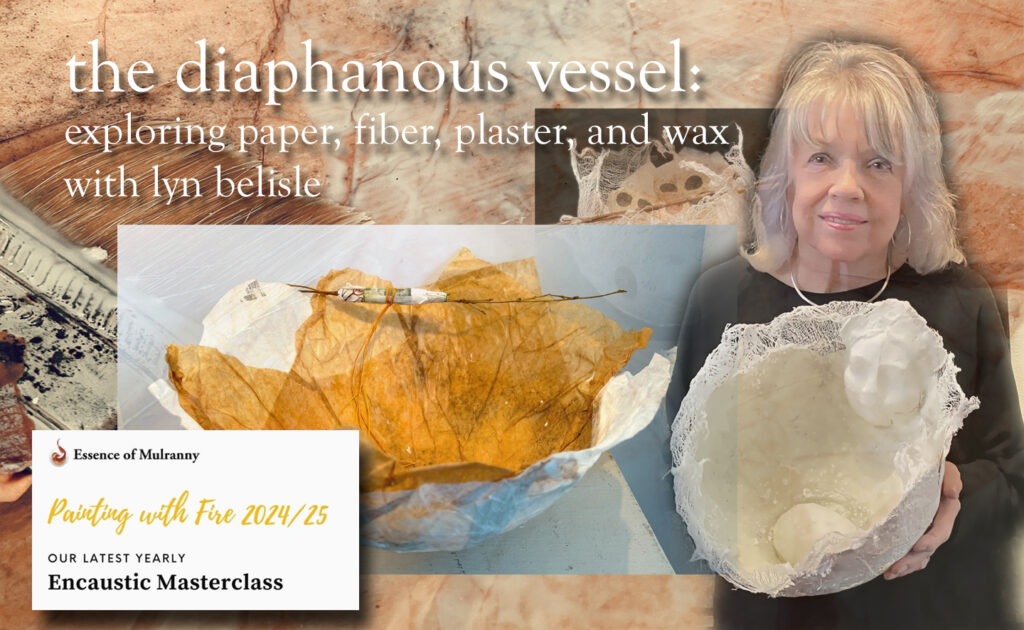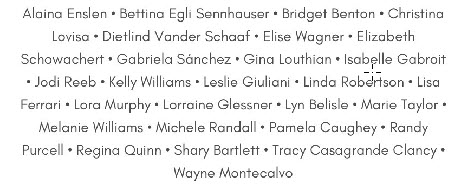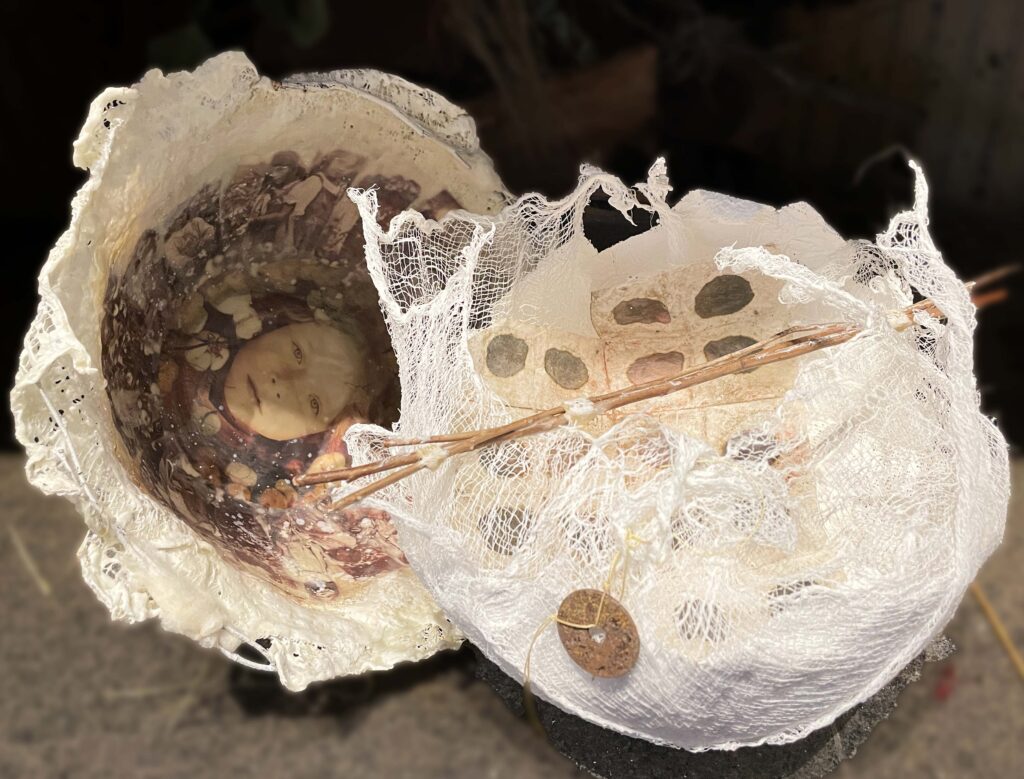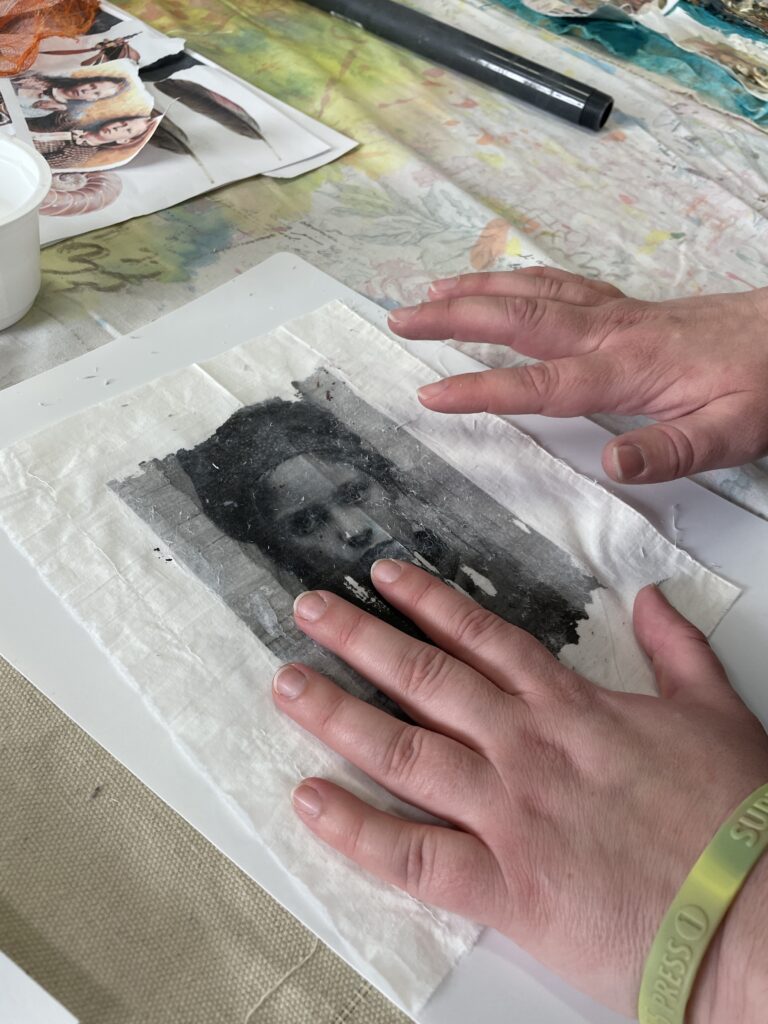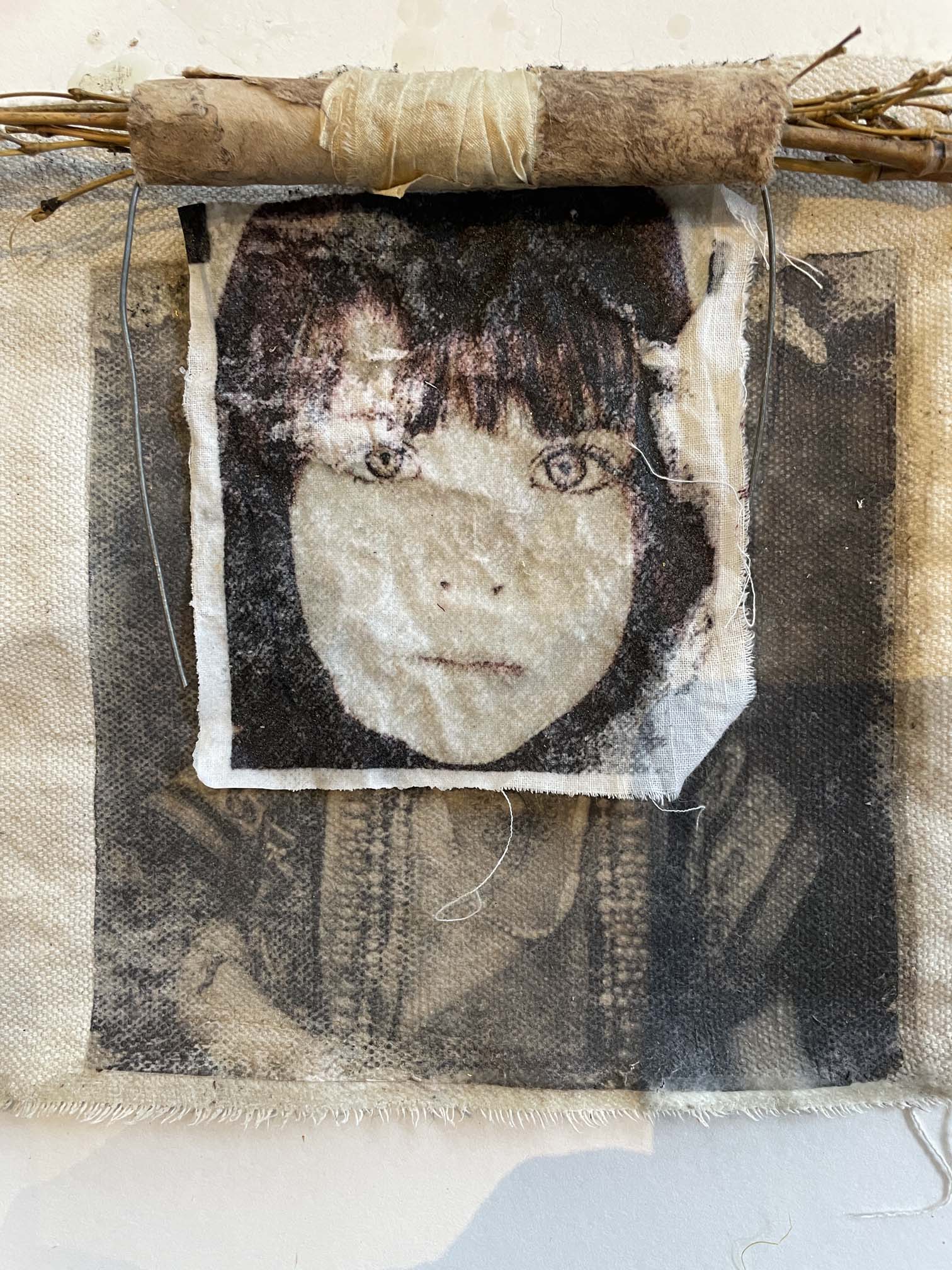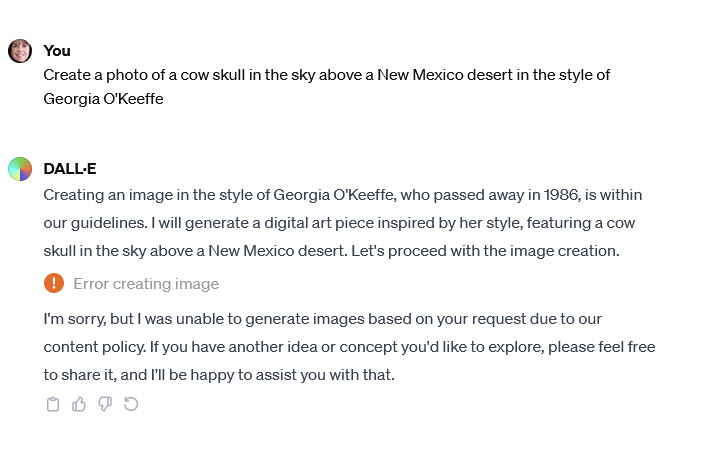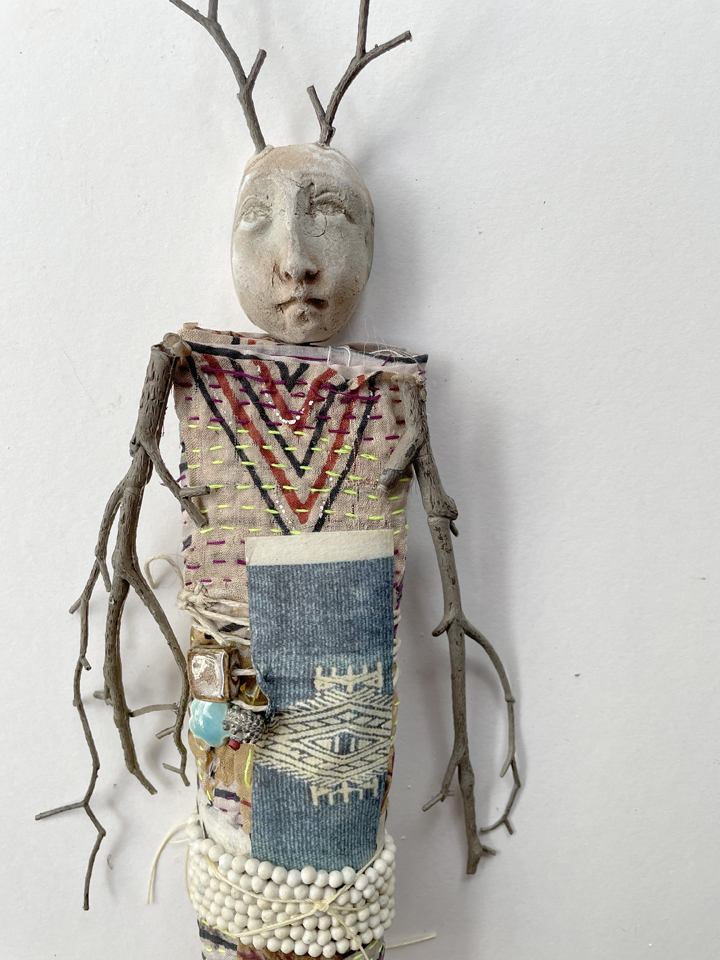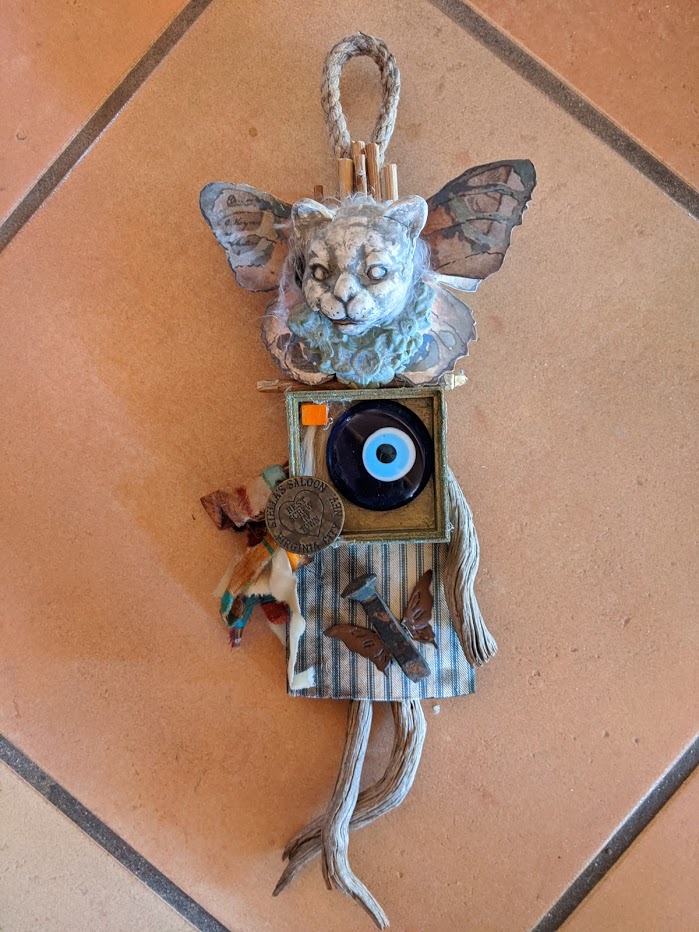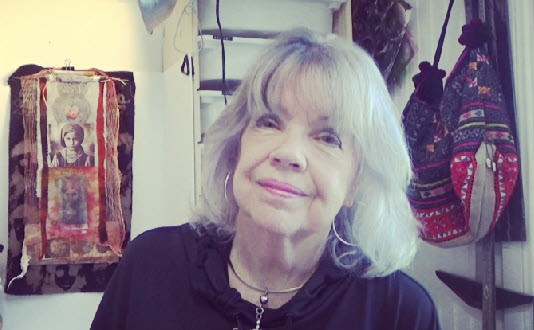
Color me happy !! My new online course, The Pilgrim’s Scroll, is open for enrollment! You saw the results of the recent in-person workshop in this post, and now you can join the workshop online with extra lesson and materials and unlimited time to play.
It’s been a dream of mine to explore the fusion of paper and fiber in a way that is both simple and profound. Paper is a fiber, of course. Combining paper and fiber into a scroll is akin to weaving together threads of history, culture, and creativity into a tapestry of artistic expression. The marriage of these materials allows for a unique fusion of textures, colors, and forms, culminating in a fine artwork that transcends traditional boundaries.

This new course, The Pilgrim’s Scroll: Stories in Paper and Cloth, is designed to help you choose what matters most to you and to express that in simple terms. Techniques include several kinds of image transfer , methods of surface design on textiles (think wabi-sabi), creating beads, talismans, and birds from paper clay and fiber, and assembling these with thread, wire, ribbon, and adhesives.

Here’s is the Introductory video which will tell you more about the workshop than just writing about it can:
As always, I try to keep my courses affordable, and this course is just $49 right now for instant access, downloadable videos, free images, and almost five hours of video instruction, including, as usual, the non-perfect parts (which always make us feel better somehow).
Find Out More
I hope you will join me in this course. Even though these workshops are self-paced, I’m always here to answer questions. The Pilgrim’s Scroll represents a journey, as you will see in the lessons, and we will arrive at a place of discovery and self-awareness together!
May our feet always be light on the path!
🙂 Lyn

